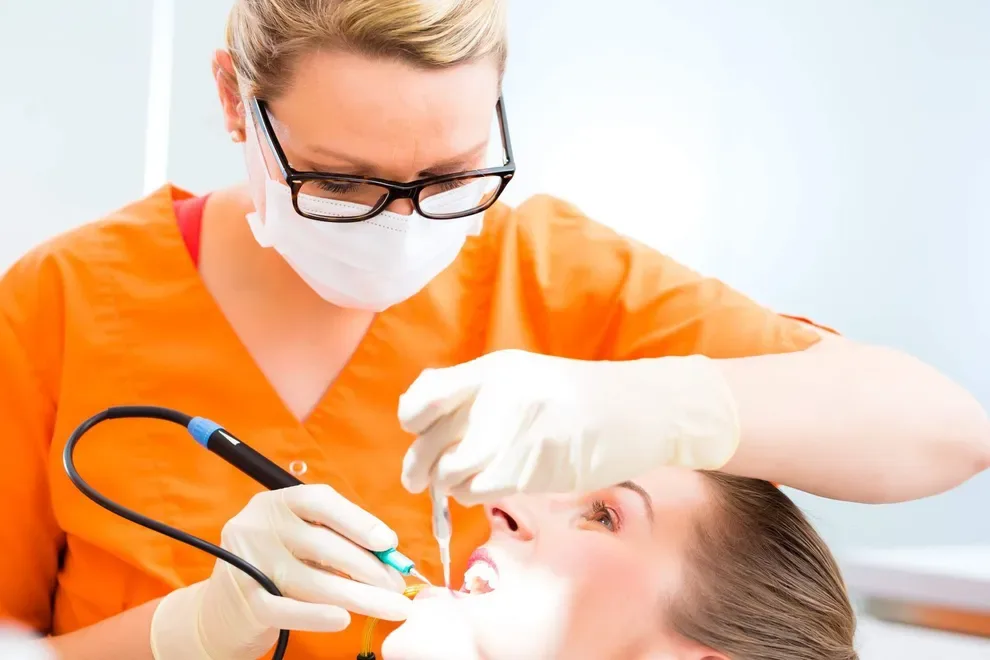When You Can Resume Eating After a Root Canal

Table of Contents
- Eating Timeline
- Factors
- When to Contact Your Dentist
- Immediate Post-Procedure Care
- Foods You Can Eat
A root canal can alleviate tooth pain caused by infection in the pulp (middle) of your tooth. For a few hours after a root canal, your mouth will be numb. You should wait to eat or drink anything until that numbness wears off.
After the numbness wears off following the procedure, start with soft foods. Avoid chewing on the tooth the root canal was performed on until your permanent crown is placed — usually within a week or two. Taking care of your teeth and body during the healing process can speed up your recovery timeline.
Your mouth is likely to be sore for a few days after a root canal. Within about a week, your tissues will be healed and ready for crown placement. If you experience significant pain beyond a few days after your root canal, or symptoms like bleeding or an uneven bite, reach out to your dentist or endodontist.
Immediate Post-Procedure Care
The first few hours after your root canal are critical for your long-term healing. The steps you take now can set you up for a healthy smile in the months and years to come.
Your mouth will be numb, so you won’t be able to gauge how hot drinks are or how sharp your snacks might be. Don’t eat or drink anything until the medication wears off and you can feel everything fully.
Follow your doctor’s instructions about your medications, including pain relievers. If you’re given a narcotic to help with pain, it could make you drowsy and uncoordinated. Be careful when driving or operating heavy equipment.
According to the American Association of Endodontists, you can brush and floss as usual, but be very gentle around the treated area. Contact your doctor if you notice severe pain, pressure, visible swelling, or hives as you heal.
Timeline for Eating After a Root Canal
The timeline for eating and what to eat when following a root canal can look like this:
Don’t chew, drink liquid, or smoke. Your surgical site needs time to heal, so keep everything out of your mouth during this crucial time frame.
Refrain from eating or drinking anything.
During a root canal procedure, the dentist or endodontist will numb your mouth. This can take two to four hours to wear off. It is recommended to wait to eat until it does. If you try to eat when things are still numb, you could bite your inner cheek or tongue.
Foods that do not require much chewing, such as eggs, applesauce, yogurt, and fish, can be good for the first few days after your root canal. Your mouth may be very sensitive to changes in temperature as you heal. Look for foods that can be served at room temperature or just slightly warmer than your mouth.
Avoid chewing on or with the affected tooth.
After a root canal, the dentist will place a temporary crown on your tooth. Up until the permanent crown is placed (usually a week to two weeks after the root canal), try to avoid chewing with that tooth. The soft foods we’ve listed below are still appropriate for this stage. Eat anything too crunchy, and you’ll put excess pressure and strain on the chewing side. Keep it soft for now.
Return to normal eating.
Once the crown has been placed, your tooth is mostly healed from the root canal, and your pain and sensitivity should be minimized. At this point, you can eat normally again.
What Soft Foods Can You Eat After a Root Canal?
Your body needs both soft and nutritious meals while you’re healing from your root canal. These ideas from all food groups can ensure you fill up with just the right type of food.
Good carbohydrates include the following:
Mashed potatoes
Well-cooked pasta
Cereal soaked in milk
Good proteins include the following:
Cooked and mashed beans
Hummus
Poached eggs
Good fruits and vegetables include the following:
Canned peaches or pears
Cooked and mashed carrot
Chopped tomatoes
Applesauce
Vegetable soups
Good dairy products include the following:
Yogurt
Cheese spread or sauce
Mashed cottage cheese
Milk
Factors That Impact the Timeline
Keeping up with good oral hygiene following your root canal can help to speed up your recovery and get you back to eating your normal diet more quickly. Brush your teeth regularly. You may wish to use a soft-bristled toothbrush to ease the pain and sensitivity at first. Remember to floss daily.
Prescription pain medications can be prescribed to manage pain for a few days after your root canal. A side effect of painkillers is that they may upset your stomach. Pay attention to the instructions with the medication, and avoid foods that can further increase nausea.
When to Contact Your Dentist
Tooth sensitivity and pain associated with a root canal should mostly dissipate within a few days after the procedure. If things worsen or do not ease within the first week, it is time to contact your dentist to see if there could be an issue.
The following reasons are also cause for concern and should be checked out by your dentist:
Prior symptoms, from before the root canal, reappearing
Swelling that is noticeable either inside or outside your mouth
Temporary crown falling out
An allergic reaction that causes itching or hives
An uneven feeling when you bite down
Most of the time, a root canal is successful in reducing tooth pain within a few days. You should be able to return to your normal activities relatively quickly.
